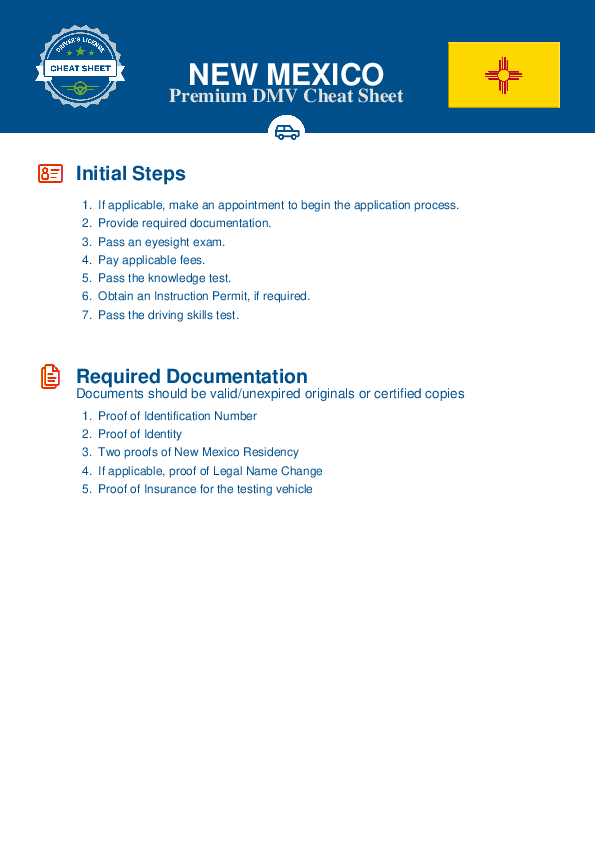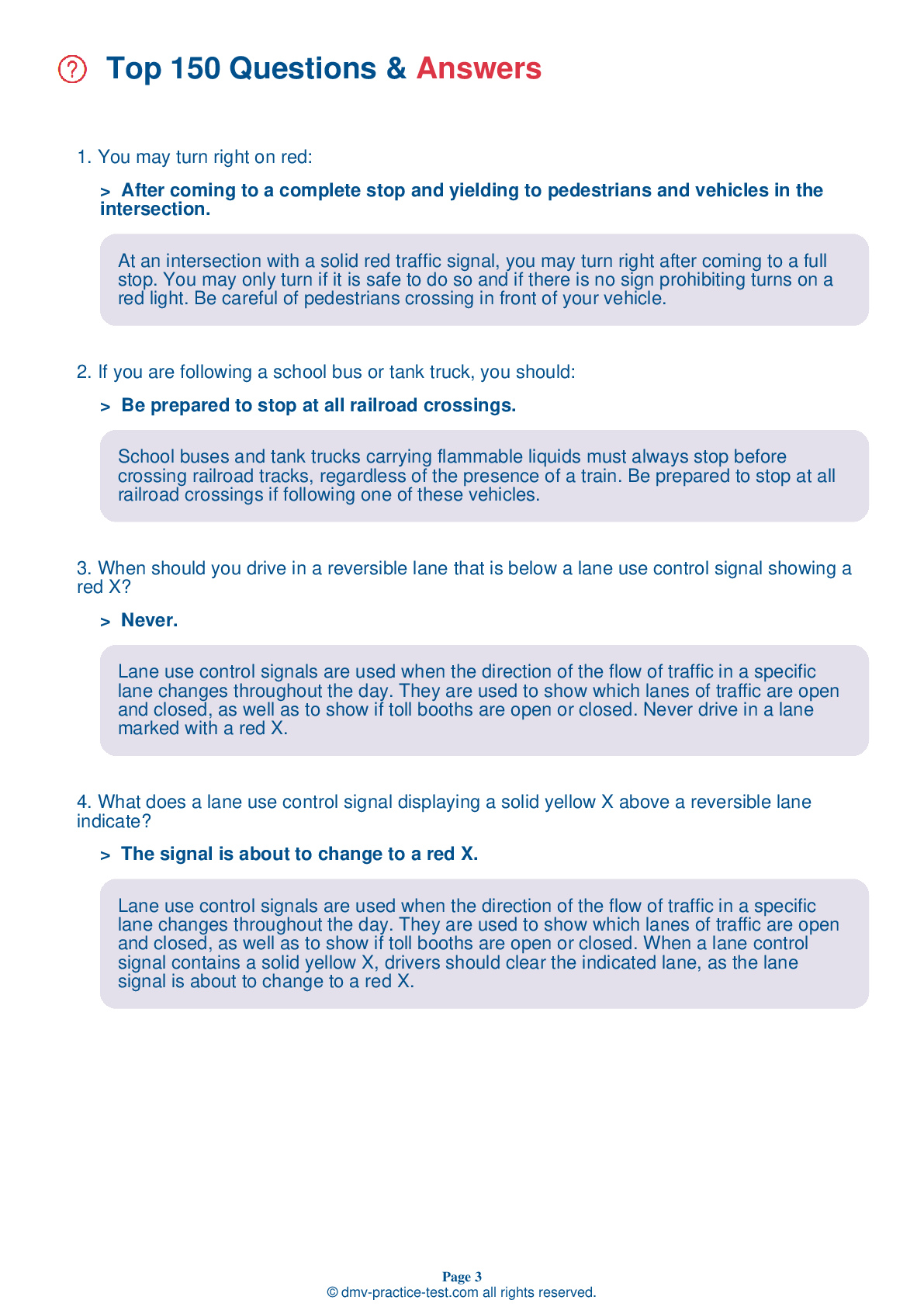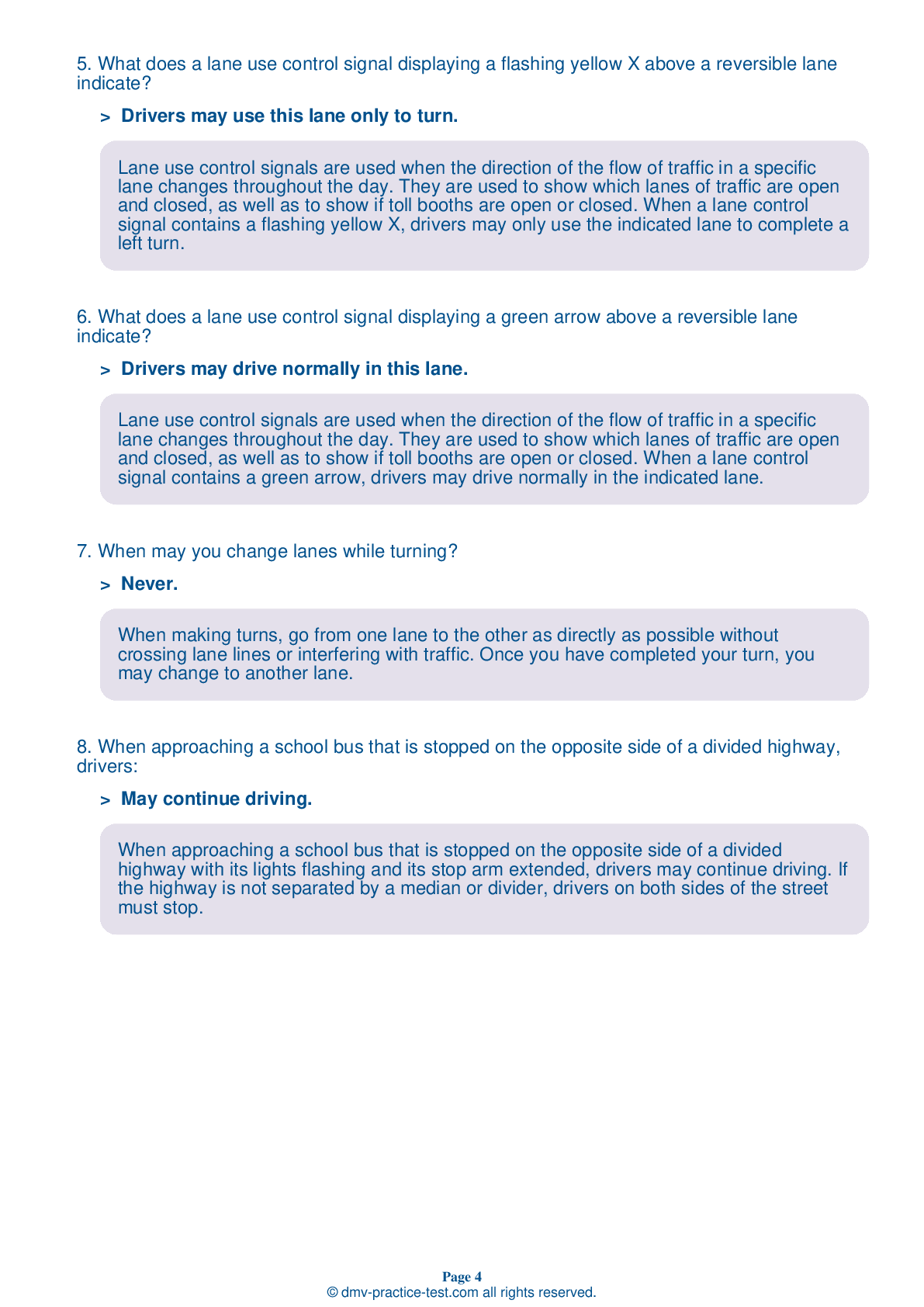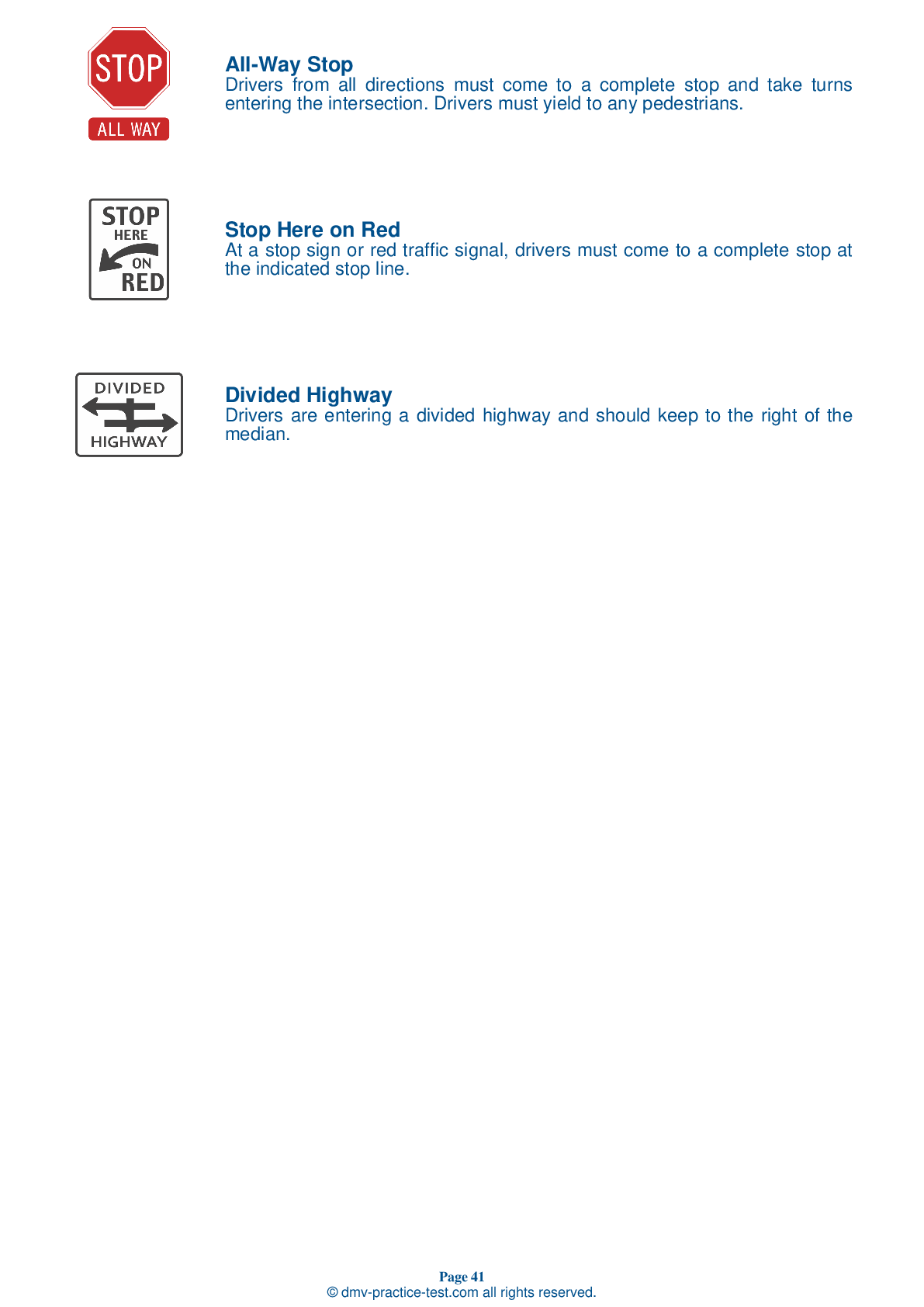FREE New Mexico DMV Practice Test #12
The DMV practise exams in New Mexico have been updated for January 2025. It includes questions based on the most important traffic signals and laws for 2025 from the New Mexico Driver Handbook. To study for the DMV driving permit test and driver's licence exam, use actual questions that are very similar (often identical!) to the DMV driving permit test and driver's licence exam.
Each question on the practise exam has a tip and explanation to help you recall the ideas. Questions about traffic rules, traffic signs, and driving statutes, as well as knowledge from the Driver Handbook, will be included in the written portion of the official New Mexico DMV test.
You must properly answer 18 of the 25 questions to receive a passing mark. To help you prepare for your instruction permit or driver's licence, take this practise test from the New Mexico Department of Motor Vehicles.
The DMV exam is offered in a variety of languages.
Using any form of testing help will result in an automatic fail, and the DMV may take further action against your driver's licence, so avoid it.
1 . You are preparing to exit the interstate. When should you start reducing your speed?
When leaving an interstate, you should maintain your speed until you enter the deceleration lane, at which point you should reduce your speed to the exit ramp's posted advisory speed.
2 . On a freeway, you realize you missed your turn or exit. You should:
If you miss your turn or exit, do not back up, but go on to the next turn or exit where you can safely turn around. It is illegal to back up on a shoulder or a freeway.
3 . Continuous hard braking on ice and snow often:
Continuous hard braking on snow and ice can result in the locking of the front brake, causing a loss of steering. To avoid the need for excessive braking, make sure to maintain an appropriate speed for conditions.
4 . You are entering a freeway. Check traffic on the freeway by:
When entering any roadway, you must be aware of traffic conditions. Use your side mirror and look over your shoulder to help you see and anticipate traffic when entering a freeway.
5 . When approaching a traffic signal displaying a steady yellow arrow, drivers:
A steady yellow arrow indicates that a red arrow is about to appear. Stop unless you are already within the intersection.
7 . This sign means:
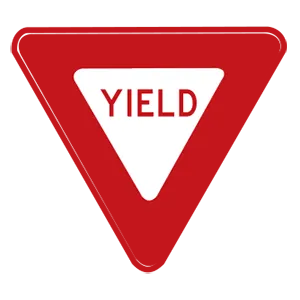
Traffic signs with three sides of equal length warn drivers to slow down when approaching an intersection and to be prepared to come to a complete stop to yield to other drivers or pedestrians. Drivers may proceed when it is safe to do so.
8 . When should you drive in a reversible lane that is below a lane use control signal showing a red X?
Lane use control signals are used when the direction of the flow of traffic in a specific lane changes throughout the day. They are used to show which lanes of traffic are open and closed, as well as to show if toll booths are open or closed. Never drive in a lane marked with a red X.
See the exact questions that will be on the 2025 New Mexico DMV exam.
99.2% of people who use the cheat sheet pass the FIRST TIME
LT gives us an insight on how the cheat sheet provided her with all the study questions she needed before taking her test.
Joe initially studied with the handbook and failed his test, he eventually found us online, studied and pass his test the first time around.

